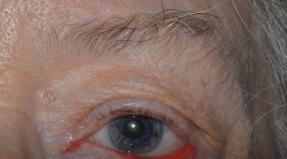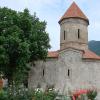Roses do not bloom outdoors. The rose is growing but there are no buds. Planting in soil that is not suitable in composition
A flower garden or an ordinary small flower bed is considered a picturesque corner of the site. They grow a wide variety of flowers there. No flower bed is complete without roses. This royal plant will not only delight your eyes, but will also add a wonderful fragrance to the garden. Growing a rose is difficult. If you are a beginner and have a question, we will help you figure it out.
There are several main problems that affect the development of roses. Consider each of them separately and learn how to deal with the problem.
wild Rose
In many flower beds there are flowers that are not root-bearing. Basically all roses are grafted. In this regard, the plant gradually begins to run wild and ceases to bloom. It's easy to determine. It is enough to do the following:
- examine the bush from below;
- on wild shoots small leaves and a large number of thorns.
Correcting the situation is easy. To do this, it is enough to cut wild branches at the base. It is imperative to remove such shoots, it is they who do not allow roses to bloom.
fertilized soil
If you are wondering why the rose does not bloom, pay attention to the quality of the soil. The royal plant does not like heavy and dense soils. To see the beauty of her buds, you may have to replant the plant. You can try soil fertilization. You should be careful here, because an excess of nutrients will lead to the active growth of greenery, not buds. In order for the flower to develop properly, you need to add to the soil:
- organic or mineral fertilizers;
- top dressing in which there is phosphorus and potassium;
- wood ash is great.
All top dressings should be made in small portions and in low concentration.

Rejuvenation
Still thinking why the rose does not bloom in the garden, then remember if you are pruning the bush. This procedure is aimed at rejuvenating the plant, due to which a large number of buds appear. Pruning is carried out only in the spring. To be removed:
- old and diseased branches;
- shoots that have suffered from severe frosts and various insects;
- branches that are more than three years old;
- shoots directed inside the bush.
It is worth explaining the last point in more detail. Such branches must be deleted. Inside the overgrown bush, insects can accumulate and fungal diseases can multiply, which will lead to the death of the flower. You can easily recognize old branches for removal by their dark, lignified bark. The rest of the shoots are simply shortened according to the following scheme:
- short pruning up to 4 buds;
- average removal of up to 7 kidneys;
- weak circumcision up to 10 kidneys.
Choose the type of pruning according to the variety of your rose. We have considered many answers to questions about why the rose does not bloom, but we missed one more main point.

Proper wintering
The rose is considered a thermophilic plant. It may not bloom due to improper wintering. The stages of preparing a plant for frost are as follows:
- hilling a bush using peat;
- covering the plant with special material, hay or fallen leaves;
- you can make a special cone of polystyrene foam and additionally cover it on top.
We have analyzed the reasons that affect the formation of buds in an ordinary plant, and that's why a climbing rose does not bloom.
Other grade
Why the rose does not bloom, you know, but here it still depends on the variety. Climbing representatives may not produce buds for the same reasons:
- bad soil;
- incorrect pruning;
- poor care and watering.
If you normalize all of the above points, then you can no longer return to the question of why the climbing rose does not bloom, and calmly grow a hedge in your garden.

Experienced summer residents who have been growing such ornamental plants for more than one year know why the rose does not bloom in the garden. They share their tips and tricks with you:
- Deep planting flowers. This inhibits the growth and development of the plant and therefore it does not produce buds. All forces are spent on building up the root system. The optimum planting depth is about 10 cm.
- Overfertilization with minerals. If you like to use organic fertilizers, then their concentration should be weak. Otherwise, the roots of the plants will burn.
- Wrong cut. After flowering, do not rush to cut the rose. The plant will hibernate and will not have the strength to form new buds.
Now you know why the rose does not bloom. Troubleshooting is easy. There is one point to which you must pay attention. The rose may not bloom due to the fact that the selected variety cannot take root in your area. Choose plants carefully, having studied all their characteristics.
Finally
We have answered the main question about why the rose does not bloom. We have provided you with comprehensive information on how to get beautiful and fragrant buds. Hurry to your flower bed and start correcting your mistakes as soon as possible.
A rose is a royal flower, even if it is just one rose, but what can be compared to a million roses? ... How to get a really grand, lush, rich bloom, and not just a few buds? Read about it below.
Flowering time for garden roses
Climbing roses (pictured below is a well-known representative of this group - rose) bloom in waves. The start of flowering falls on early summer. Flowering occurs throughout the month, many shoots grow and at the time of flowering the entire bush is strewn with flowers, then a decline, and then flowering again gains strength. And there is also a hybrid of a climbing rose with a hybrid tea - Climber, they bloom 1-2 times per season. Climbing roses of Kordes will bloom until late autumn, as well as.

Climbing rose Rosarium Utterson. Photo from ogorodsadovod.com
Hybrid tea rose begins to bloom from mid-June and continues to bloom until late autumn. Its striking feature is that there are not even the slightest interruptions, flowering continues without pauses.
Thus, it should be distinguished when a rose has taken a natural pause for it (study information about the variety and variety), and when there are some problems in care.
Reasons for the lack of flowers
Here we will look at errors that cannot be solved in one go. The solution to these problems will require cardinal: transplanting, digging, time to restore the plant, studying the literature, etc.
The very first rule is to buy seedlings from trusted gardeners. Since there are varieties that give a small number of flowers, capricious and complex varieties, and no matter how you care for such plants, they will not give abundant flowering.
The main reasons for the lack of flowers:
- A weak variety or low-quality seedling was selected for planting. A strong seedling is a plant no older than three years. The seedling must have a developed root system with no signs of decay. The bush should have three to four developed shoots. The bark of the shoot should be green.
- Bad light. From roses growing under trees, you should not expect abundant flowers. You may have noticed that the most lush rose bushes can be seen in rose gardens. Bushes are planted in a brightly lit place, which is in the shade for three hours a day - this trick will extend the duration of flowering. From the shady and north side, they are transplanted to a sunny place - after that, the plant should be given time to adapt.
- Incorrectly prepared soil for planting. The soil for planting should be light, well-permeable and at the same time retain air and moisture. In no case should the soil be dense, prone to acidification. In order to improve poor soil, it is dug up with peat, compost, sand, humus, as well as with the addition of other substrates that can make the soil lighter and more nutritious. If there is too much moisture, they tear out drainage grooves or organize drainage.
- Insufficient depth when landing- the place of the stock is not deep enough and the shoots of the "wild" take nutrients from the cultivated plant.
- The seedlings are planted on the north side, or the place is too windy- this roses do not like;
- Incorrect removal or pruning of renewal shoots, poor-quality pruning, ignoring blind shoots. For example, a hybrid tea rose blooms only on shoots. current year, and blind shoots (that is, those that do not give flowers) can easily be turned into flowering ones. Recall that pruning roses is almost the most important point regular care.
- Poor bush insulation in winter. After a stressful wintering, the rose needs time to recover, there is no time for flowering. In winter, the bushes are covered with spruce branches, straw, roofing felt or spunbond. To prevent the weight of the snow from breaking the roses, the shelter is placed on special wooden supports or sticks. Roses should be covered when the leaves are completely dry. It is best to cover when the temperature has already reached -3 and no later.

Poor quality seedling. Photo from agronomist.in.ua
Do roses bloom in the first year after planting and when can flowers be expected
Depends on the type of rose and the seedling itself. With proper storage of seedlings in winter, as well as after planting, climbing roses bloom in the first year. As a rule, rambler roses bloom. If the plant did not bloom, the shoots may have been frozen. But even if the rose does not bloom, and this happens for no particular apparent reason, it forms a beautiful bush and will definitely bloom next year - this can be explained by the fact that it needs a set of root and green mass to bloom.
The first flowering also depends on the moment of planting., for example, if the plant was planted in September, then the growth of buds will already be noticed by the beginning of spring, and if the seedling was planted in the spring, then flowering will begin twenty days later, while the care should be more thorough.
After the bush has faded, cut off all flower stalks. It is impossible to allow the wild rose to develop. And you should also cut out all the old shoots, they are not needed and they will not give flowers. 2/3 of all old peduncles should be cut off, leaving 3 shoots each.
A hybrid tea rose with proper pruning can bloom three times a year.
Mistakes in care, as the reason for the lack of flowers
Here we describe the causes that can be eliminated without plant transplants.
There are four global reasons:
- Wrong watering. Tea roses require plenty of water. By no means superficial watering, which many novice gardeners sin with! On average, they are watered once abundantly, once every ten days. In hot weather, water once a week for 15 liters in the holes around the bushes. It is best to water in the morning or in the evening, the main thing is that by night the leaves are completely dry from the water. After watering, the earth is mulched. For irrigation use settled or rain water. You can determine the lack of moisture by stopping the growth of shoots, by shedding leaves and crushing flowers.
- Rose diseases. The formation of plaque and rot on the stems. To do this, before sheltering in winter, the bush is checked for lesions and all the bad shoots are cut and burned. Sprayed with a solution of 3% vitriol. In the spring, the affected areas are cleaned, a thorough pruning is done, and tetracycline ointment is applied to the scraped areas. In summer, you should look at the bush every two days and cut off the affected areas.
- Lack of batteries. To feed the plants use the following elements:
- Nitrogen. Helps the development of leaves and shoots. Dilute 1 tablespoon per ten liters of water;
- Phosphorus. Enhances root growth. You can determine that there is a shortage by looking at the leaves, a spot and brown-purple stripes appear. They feed with superphosphate at the rate of a large spoon per 10 liters of water;
- Potassium. Identified by yellowed leaves. Helps the plant fight fungal diseases. Calculation: a large spoon for ten liters of water;
- Magnesium. Helps photosynthesis. With a shortage, colorless spots appear.
- Iron. Yellowing of the edge of the leaves. With a lack of iron, peat or acidic top dressing is introduced into the soil.
- Bor. With a shortage, shoots die off, the edges of the leaves are bent. For top dressing, ash is scattered near the bush and dug up with the ground.
- Manganese. With insufficient quantity, the veins of the sheets turn yellow. For top dressing, a solution of 0.5% manganese sulfate is prepared.
- Excess batteries. This is also the sin of many novice gardeners who take care of their plants diligently, but without understanding what's what, and begin to fertilize everything. Overfeeding inappropriately is just as bad as underfeeding! It is important to understand when and what fertilizers are needed:
- complex - give at the beginning of spring, at the start of growth, during flowering it is useless;
- phosphorus-potassium fertilizers are applied either in spring or in autumn at the last top dressing;
- nitrogen promotes the growth of green mass, so it is not appropriate at the end of summer and autumn;
- sometimes foliar top dressing may be required (during prolonged rains).
What to do if the roses in the garden do not bloom
The procedure depends on the diagnosis. Which of the above reasons applies to your situation?
In its simplest form, you should act like this:
- We choose a trusted seller and a good variety.
- The rose must be grafted onto a hardy rootstock.
- At the same time, it is better to immediately discard the northern, cold, windy places, choose a bright, warm, calm place for the rose. From buildings or arches, roses are planted 50 cm.
- The plant does not bloom in heavy soil, so the soil must be dug up to a meter deep in advance. The earth is saturated with peat, manure or humus. The soil must be nutritious, otherwise where are the lush flowers?
- Professional pruning required. As a rule, the crown is sheared with a fan.
- After flowering, the lashes and faded shoots are cut off. Feed the soil with potassium and phosphorus. Leaving a rose for the winter, be sure to cover it with a thick film, protect all shoots from rodents.
How to stimulate flowering
It happens that roses still bloom, but not as brightly as we would like. Causes:
- Illiterate pruning. Not everyone knows that summer pruning allows you to prolong flowering, there is a popular and very sensible video on the Marina Flowers blog about this (for example, a video from July 9, 2015, “Average pruning of roses after the first flowering - for quick re-blooming”) .
- Withered flowers remain on the bush. Attention - this is a fairly common cause of poor flowering! Withered flowers should be removed in time, without pity. In order for the plant to bloom all the time, it is necessary to inspect the bush and cut dry branches and buds daily.

Photo from flowerbank.ru
top dressing
This is actually not such a simple matter. It is difficult to give unambiguous recommendations here, because everyone has different initial conditions. Let's see what practitioners recommend.
A user from the rosebook.ru website recommends fertilizing the plant during pauses with potassium monophosphate and infusion of fermented grass. Forum user stilist advises to fertilize only until mid-July. He believes that for good growth A properly laid planting pit with top dressing plays an important role. In the autumn they make a hillock with organic matter, in the spring they feed it with complex fertilizer. Summer pruning required.
And also there is an opinion that top dressing of the bush is obligatory when the first shoots bloom.
The bush should grow at a slight slope, like a hole under the bush, so that water does not stagnate. If a climbing rose does not bloom, pruning is required with the formation of a crown, buds will form on the cut branches. Also, to stimulate, create a microclimate and spray the plant. They dig a pit, a pool to create moisture.
If the bush is in the shade, it should be transplanted to a bright place. If it is hot, water at least once every two days.
From organic matter, gardeners use rotted horse manure, buried in the soil. Nitrogen gives green foliage growth. Phosphorus helps the formation of flower stalks. Magnesium helps bud growth. Iron helps prevent rose diseases. They also use mineral fertilizers for spraying - this is foliar top dressing.
Proper planting of seedlings:

Photo from pseeksy.vepo.com
If you take care of the rose correctly, it will bloom for more than 25 years.
About the correct planting of roses
Deepen the vaccination and by how much exactly? About this - in the blog "Garden World".
The rose is considered the queen of plants. It gives both a lush garden and a small summer cottage luxurious look. Every season, the gardener expects roses to bloom, but what if they don't? First, find out the reason why the roses do not bloom, and then proceed to solve it.
Why don't roses bloom?
Roses quickly adapt to new planting conditions. Growing them is easy if you follow the basic techniques for caring for the plant, but you should not expect the bush to bloom immediately - it takes time. Another question is when roses stubbornly refuse to bloom, having previously delighted the gardener with beautiful inflorescences.
Why roses don't bloom:
Why roses do not bloom: description
- If roses landing site not suitable or the structure of the soil mixture, then they will not bloom. Roses develop only in a fertile and loose soil mixture filled with air and moisture. The landing site should be open and sunny, but with protection from the wind - roses bloom slowly in drafts.
- Roses are great if little moisture in the soil , but during the flowering period this should not be allowed. Without watering the roses, the gardener himself makes every effort to ensure that they do not bloom. In the best case, the flowering of roses will be very weak.
- No pruning negatively affects the development of roses. Any variety from a well-known gardener needs this procedure. Rejuvenating pruning is carried out regularly, after which 5 strong shoots prone to flowering remain.
- Unprotected roots in winter minimize the likelihood of roses blooming in the spring. Bad defense from the cold, constant temperature changes or night frosts in the spring are the reasons why roses do not bloom, but only bush.
- Rose bloom may occur, but be scarce if the plant not fed. A prerequisite for flowering is the introduction mineral fertilizers, ash, superphosphate, etc. The listed components perfectly support weakened shoots, lay the foundation for the formation of buds.

If an excellent picture of the development and formation of shoots in roses is observed in the garden plot, however, there is a complete absence of flowering, then, in addition to the options listed above, the reason why roses do not bloom, but bush, may be wild bush.
In most areas, roses are grafted. The appearance of shoots from the rootstock of a bush does not indicate the vector of development of roses that a gardener needs. Wild rose bushes have weakened shoots that lose the distinctive properties of their variety. Another tell-tale sign that a rose bush has gone wild is the small leaves and large thorns.
What do we have to do? The shoots are removed by pruning, the rose bush is stimulated to form buds with the help of watering and fertilizers. As soon as the characteristic wild lashes have been noticed, it is necessary to dig up the earth to their base (lashes) and remove everything clean.
A rose is a very beautiful flower, a “queen” among plants, and therefore many housewives plant it with pleasure, so that soon the rose will delight the eye with its delicate buds. But for some, the rose still does not bloom, although it grows, as before, and the flower looks healthy. What could be the reasons? Why don't roses bloom?
Causes
- Not enough time has passed. If you have planted the rose correctly and expect immediate results, then this will not happen. Rosa needs time to adapt, be patient and wait.
- A rose can form wild shoots, which will spend all its strength. The growth is easy to distinguish: it has smaller leaves than the whole plant and many thorns, it grows at the bottom. If the shoots are not removed in time, the bush will begin to run wild and will not bloom. If you notice growth, try to remove it at the very base.
- Plant overfeeding nitrogen fertilizers. Such fertilizers stimulate the growth of new shoots, but not the formation of buds. In this case, feed the rose with a mixture of potassium salt and superphosphate or use a special fertilizer, ordinary ash will do. For the winter, the plant should have a good shelter, all weak shoots should be removed.
- Lack or excess of nutrients. For a rose to bloom, you need a golden mean: proper watering and a sufficient amount of fertilizer.
- Pests are another reason roses don't bloom. Get rid of them if they exist.
- Wrong soil. You may choose the wrong soil or cultivate it incorrectly. Roses need loose fertile soil. If the land is poor and there is no way to find another, then think about fertilizers. Before planting, the soil where the rose will be located should be loosened by 50-70 cm.
- In the shade and in the draft, the rose not only will not bloom, it may die! Therefore, choose open, wind-protected and well-lit places for these flowers.
- Rosa did not survive the winter well. To avoid this, think in advance about how it will be better for your rose to overwinter.
- We have already mentioned about pruning overgrowth and extra shoots. But it should also be said that different types roses pruning should be different. Find out exactly how best to prune your rose.
climbing rose
Why does the climbing rose not bloom? One of common causes such a problem is a poor overwintering of last year's shoots. If the climbing rose is an annual, then it will not bloom, you need to wait. The buds of such roses grow on young side branches. When the branches begin to grow, it is better to tie them to a horizontal support. When pruning climbing roses, remove thick old shoots and wild shoots. Do not get carried away by excessive removal of new shoots - they are needed to keep the bush young and viable longer. The roots of such a rose go approximately to a depth of 1 meter, and therefore it is better to fertilize and process this entire layer.
Chinese rose
Why won't China rose bloom? If properly cared for, the Chinese rose will bloom almost all year round. Flowers usually appear from spring to autumn.
If the Chinese rose does not bloom, then you are not caring for it properly. For this flower you need:
- Moderately sunny place;
- Summer - Fresh air(a pot with a flower can be taken out to the balcony);
- Moderate spraying;
- Abundant watering in summer and moderate - in winter;
- Temperature - not lower than +15 degrees;
- Annual spring transplant into fertile soil;
- spring pruning;
- Feed weekly in summer and spring and monthly in winter.
As you have already noticed, the main reason why roses do not bloom is the wrong care for them. We advise you to decide on the type of your rose and carefully study the features of caring for it.
Why a rose does not bloom - the main mistakes of flower growers Sometimes even experienced flower growers find it difficult to say why a rose does not bloom. Knowing the basic rules for caring for a beautiful flower will allow you to enjoy its magnificence of colors and delicious aroma. When breeding roses, you need to be prepared for the fact that theoretical recommendations from experts and the real situation in practice may have some inconsistencies with each other. Therefore, it is very difficult for even experienced flower growers to determine why a rose does not bloom. The reason for the lack of buds on the bush can be both insufficient air humidity, impurities in the soil, the composition of local water, and insufficient knowledge of the basics of caring for this beautiful flower. Let's analyze the main mistakes of flower growers. The rose does not bloom: wild bush In most cases, growing roses in our area are grafted, not own-rooted. Therefore, you may not notice the appearance of wild shoots from the rootstock of a bush on which a cultivated rose is grafted. Such wild shoots weaken the bush, and it gradually loses its varietal properties. To prevent this from happening, it is necessary to remove this insidious growth, which is located at the very bottom, in a timely manner. It is easy to identify by very small leaves and a large number of thorns. As soon as you see such a whip, tear the earth and boldly cut it off at the very base. Soil quality It is not uncommon for roses not to bloom due to unsuitable soil structure or improper tillage. To prevent this from happening, you should not plant it in dense, heavy soil. To obtain a lighter composition, sand can be added under the bush and carefully loosened to a depth of 5-7 cm. Fertilization The reason why the rose does not bloom on the site may be a lack or excess of fertilizers applied to the soil. The main sign of an excess of nitrogen fertilizing is the active growth upwards of lush foliage without the formation of buds. You can correct the situation by applying phosphorus-potassium fertilizer or ash. The rose menu should include top dressing of a low concentration from an infusion of liquid organic matter or mineral fertilizers. Nutrient mixtures are applied alternately, alternating them every two weeks. During the period when buds appear on a bush, an infusion of wood ash can be served as a dessert (for 1 l and 1 tsp of ash), which will provide the plant with potassium. Pruning a rose bush The purpose of pruning a rose bush is to rejuvenate it so that it can produce more flowers. The event is held every spring, thereby ridding the plant of weak, diseased and unproductive shoots, and the rest to receive impulses for further development. First of all, when pruning, all weak, diseased branches damaged by frost and disease are removed. Next, the shoots that are directed inside the bush are cut. This will ensure ventilation of the inside of the rose and eliminate the possible accumulation of pests and fungal diseases. Next, all unproductive shoots are removed, which include branches older than 3 years. They are easily identified by their strongly lignified trunk and dark color. It is on such branches that in most cases buds do not appear, since their vessels have lost their elasticity and are completely clogged with salts. The remaining shoots are shortened in accordance with the rose variety. Pruning can be done up to 3-4 buds (short), 5-7 buds (moderate) and up to 8 buds (weak). Wintering rose bush Also, the rose does not bloom as a result of improper wintering. To avoid freezing and exposure to moisture before the onset of cold weather, the rose bush should be covered with rotted peat, covered with protective material or fallen leaves. Also experienced gardeners make special polystyrene foam cones and cover the plants with them. In addition to the above reasons, when choosing a variety, pay attention to its features. Since the reason why the rose does not bloom may be that the conditions of your site do not match for its full development.



















